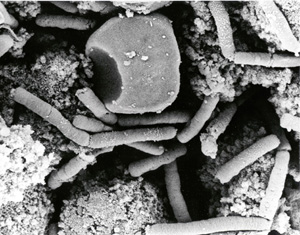On July 12, 2012 the national reference laboratory for anthrax confirmed the detection of anthrax bacteria in samples from a cattle holding in the district Stendal, Saxony-Anhalt. The pathogen was found in a suckler herd grazing on a meadow in the vicinity of the Elbe River. The district authorities detected the outbreak of the notifiable animal disease and promptly initiated the measures foreseen by legal regulations (among others isolation of the herd, trade ban, restriction of movement of people). So far, infections of persons who were in contact with the affected herd have not been observed. Investigations on the origin of the agent are ongoing.
Anthrax is caused by the spore- and toxin-producing bacterium Bacillus anthracis. In animals, the notifiable disease is often fatal. It can be transmitted to humans (zoonosis). The German term „Milzbrand“ results from the observation that the spleen of affected animals often looks black as if „burnt“.
The bacterium produces dormant forms, so-called spores which may survive in the soil for several decades. They resist decay processes as well as drying and tanning of hides.
Anthrax spores ingested by animals with the food are often derived from the soil. Decades ago, it was common to bury carcasses of diseased animals or animal waste products. As anthrax spores survive in the soil for decades, the spores brought back to the surface (by digging up carcass burial sites or by floods) can again infect animals via the food and cause anthrax disease.
Information on the recent outbreak is provided by the district Stendal (www.landkreis-stendal.de), general information on human anthrax can be found on the website of the Robert Koch-Institute under www.rki.de.


